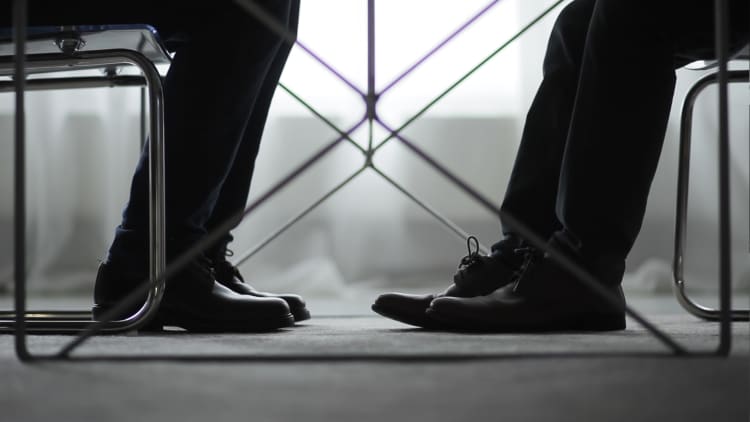People tend to look before they listen, and how you say something is often more important than what you're saying. So, how can you effectively communicate without words?
Peter B. Stark and Jane Flaherty have studied the art of negotiation for years. In their recently revised and updated book, "The Only Negotiating Guide You'll Ever Need: 101 Ways to Win Every Time in Any Situation," they write that in a 30-minute conversation, two people can send 800 different nonverbal messages.
As you might expect, many of these cues are intuitive. Mirror neurons in your brain are hard-wired to comprehend emotion in others. You know a nod and a smile typically means someone agrees with you. You know fidgeting can represent anxiety and lack of confidence.
Some nonverbal messages, however, are less obvious. According to Stark and Flaherty, mastering them could be as difficult as learning a foreign language. Here are a few to be aware of in both yourself and your counterpart.
Stay close, just not too close
"If your counterpart starts leaning closer to you, you will know you are making progress," write Stark and Flaherty. Moving away from someone, on the other hand, emits a sense of uncertainty. Be aware of your own subtle movements, and use them to your advantage.
Yes, closeness conveys trust, but you, like me, probably have that friend who cuts you off on the sidewalk, or hovers over your shoulder when you're sitting, or leans in a little too close to tell you something. Don't be that guy. Maintain personal space.
Keep your palms open
This is evolutionary entrenched into us. "It goes back to medieval days when open palms indicated that a person had no weapons," write Stark and Flaherty. "Today they generally indicate that a person has nothing to hide."
Hands reveal a lot. Clasping them behind your head, for instance, can portray dominance, while involuntary self-touching might mean you're distracted or insecure.
Try not to focus on your hands too much, though. You know what it's like when you're so uncomfortable you don't know what you usually do with them.
Do not cross your legs
This one comes as a bit of a surprise. In "How to Read a Person Like a Book," Gerard I. Nierenberg reported his finding that of 2,000 videotaped sales transactions, not one was successfully made by someone with his or her legs crossed.
According to Stark and Flaherty, you should sit, rather, with your feet flat on the floor. This way "you will have a better chance of sending an open, positive signal."
Keep steady — not piercing — eye contact
Looking at someone in the eye, especially a superior, is important. If you want to demonstrate confidence and respect and convey that you are listening, maintain eye contact for spurts of a few seconds.
But you don't want to overdo it. Don't stare for too long or too intensely. While steady, gentle, eye contact communicates a sense of honesty, Stark and Flaherty write, "Someone who is angry with you or feels superior may maintain piercing eye contact."

Awareness of these subtle cues during a negotiation is a considerable advantage. For instance, if you propose something and your counterpart leans back, you know to proceed with caution, or modify your offer.
If he tucks his arms in tight and clasps his hands on the table, you might say something like, "I'm sensing you may have a concern with the last point we discussed." Stark and Flaherty recommend being candid to build a sense of trust.
It's important to note, though, that these signs are not always reliable. People might cross their arms because they are cold, or scratch their noses because they have an itch. To ensure accuracy, Stark and Flaherty recommend looking out for clusters of messages. Many actions of the same type — avoiding your gaze, leaning away, crossing legs — can speak volumes.
Signals are also context dependent. "A single touch on the shoulder or forearm could have many different meanings," they note, depending on whom it's from or for.
And finally, to validate what you are sensing, consider congruence. Are the nonverbal cues in sync with the words spoken? If they seem to contradict what your counterpart is saying, you might reconsider your assumptions.
If you mind these subtle messages, you can infer a lot beyond what someone tells you, maybe even things he or she wouldn't want you to know. "Nonverbal demonstrations are more accurate than verbal messages," Stark and Flaherty write, "especially regarding feelings, attitudes and personally held values."
Like this story? Like CNBC Make It on Facebook.
Don't Miss: Mental coach of 3 top NBA draft picks shares 7 ways you can thrive under pressure




